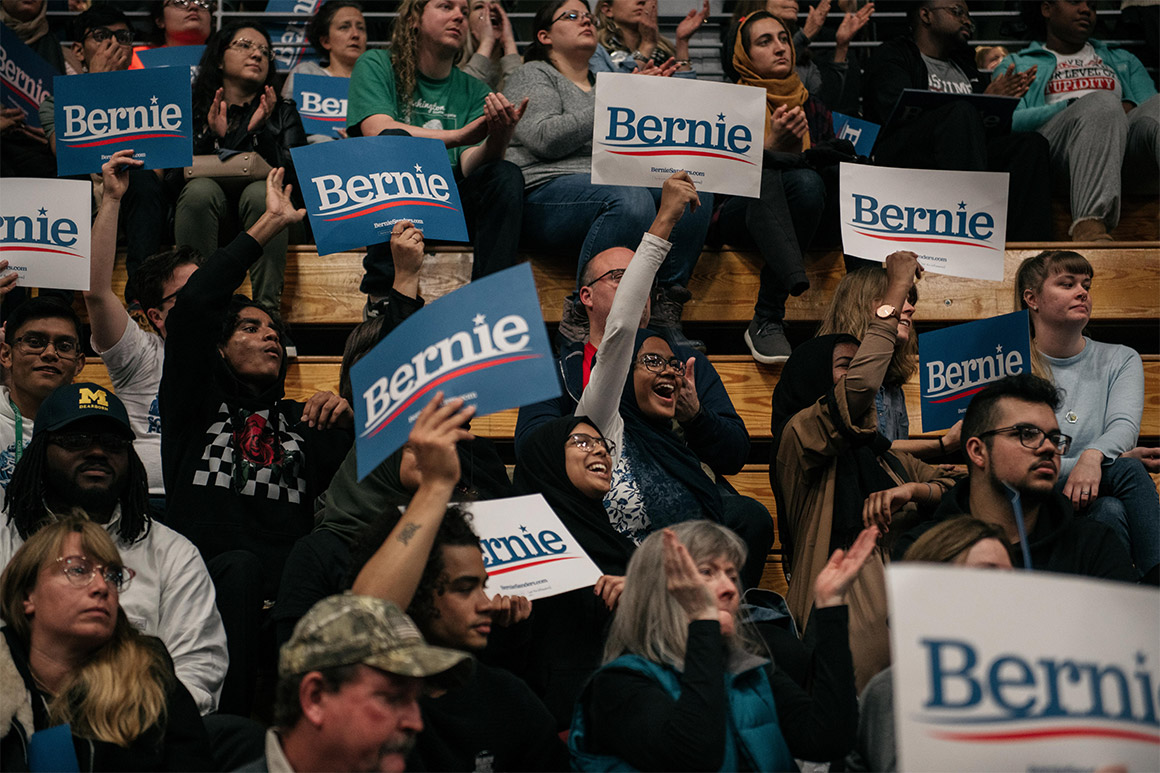
A Newsy analysis of Federal Election Commission data found that since the start of the 2008 election cycle, federal political campaigns have paid more than $220 million to credit card-processing companies including American Express, Bank of America and PayPal, among dozens of others.
Between the 2008 and 2016 election cycles, the amount nearly doubled, from $28.2 million to $51.5 million. The 2020 cycle is on pace to shatter that record: Through October, the 2020 campaigns spent more than $23.8 million in processing fees—more than a year before the election.
Nearly one-tenth of that money came from Sanders’ presidential campaign, which has paid credit card processors more than $2.3 million—the most of any candidate this cycle. Second is Warren, whose $1.75 million in processing payments narrowly edged out Pete Buttigieg’s $1.73 million.
The driver of the ever-increasing windfall for credit card processors is a fundamental change in the way political campaigns have courted online donors. With candidates both seeking a large number of donors—irrespective of the amount they give—and aiming to turn them into repeat low-dollar contributors, there’s a huge upside for the companies that process those donations: the per-transaction fees.
“The smaller the transaction amount,” Zucker said, “the larger the percentage of that transaction that disappears into fixed fees.”
When you give a dollar to a political campaign using your credit card, a portion of that money is paid to a range of companies—the bank that issues a donor’s credit card, the campaign’s bank, the credit card company, etc.—and is generally taken as a percentage of the donation, plus a fixed amount per transaction. Even ActBlue, which advertises a flat fee of 3.95 percent, gets charged a per-transaction fee behind the scenes, though the organization would not give exact amounts.
And as contributors make smaller but more frequent contributions, those per-transaction costs have a disproportionate impact.
To illustrate the point, Zucker gave a commercially reasonable rate—similar to Stripe’s or PayPal’s—of 3 percent plus 30 cents per transaction. Imagine a single donor makes a $1,000 contribution to a candidate under that scenario: The campaign would get $969.70, and the processing middlemen (Visa, Wells Fargo, and so on) would take $30.30. But that balance changes radically if the campaign has a thousand different supporters make tiny online donations of a $1 apiece. In that case, the existence of per-transaction fees means the credit card processors would take $330, while campaign would get only $670 — even as it would be able to tout a low average donation size.
Over time, the proportion of online donations that goes to processing fees has gone up. In the 2008 cycle, an average of about 1.3 cents from every dollar donated online to campaigns went to credit card processors. So far in the 2020 cycle, that rate is roughly 3 cents per online dollar.
That escalation has almost certainly been influenced by the Democratic National Committee’s presidential debate-participation requirements. To qualify to appear on the debate stage in June, candidates had to garner contributions from more than 65,000 unique donors. That number has gone up and up—130,000 for August, 165,000 for November, 200,000 for the upcoming December debate—and resulted in many candidates soliciting online donations as low as $1 to make the cut.
Now, the universe of small-dollar donors is vast. Six Democratic presidential candidates have met the December threshold with at least 200,000 individuals contributing to their campaigns. At the top of the pack is Sanders, whose campaign reported this week that it has received 4 million individual donations this year, with roughly one-fourth of those coming from the more than 175,000 supporters who send automated monthly donations. Based on the most recent available data, Warren is second, with more than 750,000 unique donors, and Buttigieg is third, with more than 580,000.
Both ActBlue and the Warren campaign declined to comment on the record for this article. Other presidential campaigns, including those of Sanders and President Donald Trump, did not respond to multiple requests for comment.
Many in the political industry cast the fees as simply the price of doing business, even at the state and local levels. “Ultimately, we had to keep the money flowing in as quickly as possible,” said Cameron Russell, who managed Christine Hallquist’s 2018 Vermont gubernatorial campaign. “We didn’t have time to stress over the transaction fee.”
The 2020 campaigns seem to be making a similar calculation—especially as the size of a Democratic candidate’s donor base now serves as criteria for making it onto the presidential debate stage.
Donors, however, appear to be making a less-informed choice. An October Newsy-Ipsos poll found that nearly half of donors didn’t know processing fees were taken out of their donations. At least 44 percent said knowing the connection between donation size and fees could change how they donate.
“If your goal is to reduce the amount of money that you’re paying credit card companies with your donations, then you want to limit the number of donations you make,” Zucker said. The more donors combine smaller donations into larger, less frequent contributions, he said, “the more those campaigns are going to have at the end of the day.”
Susan Wisner, a Sanders supporter who has already donated small amounts to his campaign dozens of times this cycle, said she had no idea that slices of her donations were going to credit card fees.
“Never knew they took that deduction,” Wisner said. Now that she knows making many small donations—instead of a large one—increases the cut going to processing fees, she said she may change the way she donates. She said she plans to tell her friends to do the same. “I’ll pass it along.”
Andrew Rafferty contributed reporting to this story.
Source: politico.com
See more here: news365.stream





